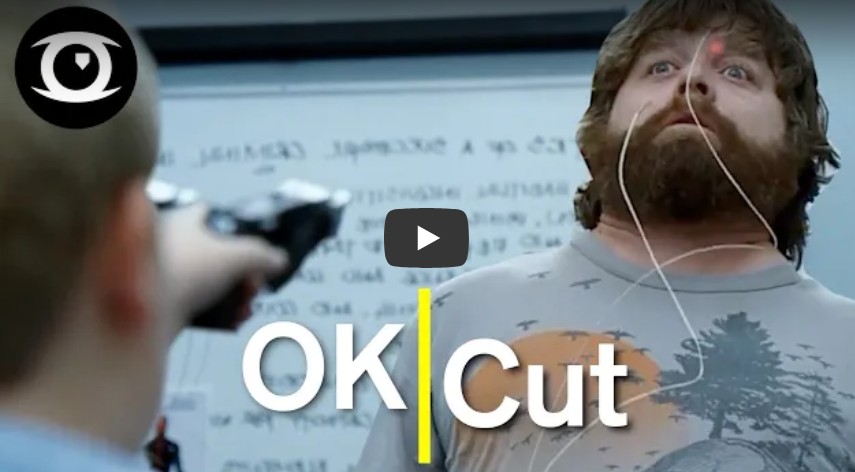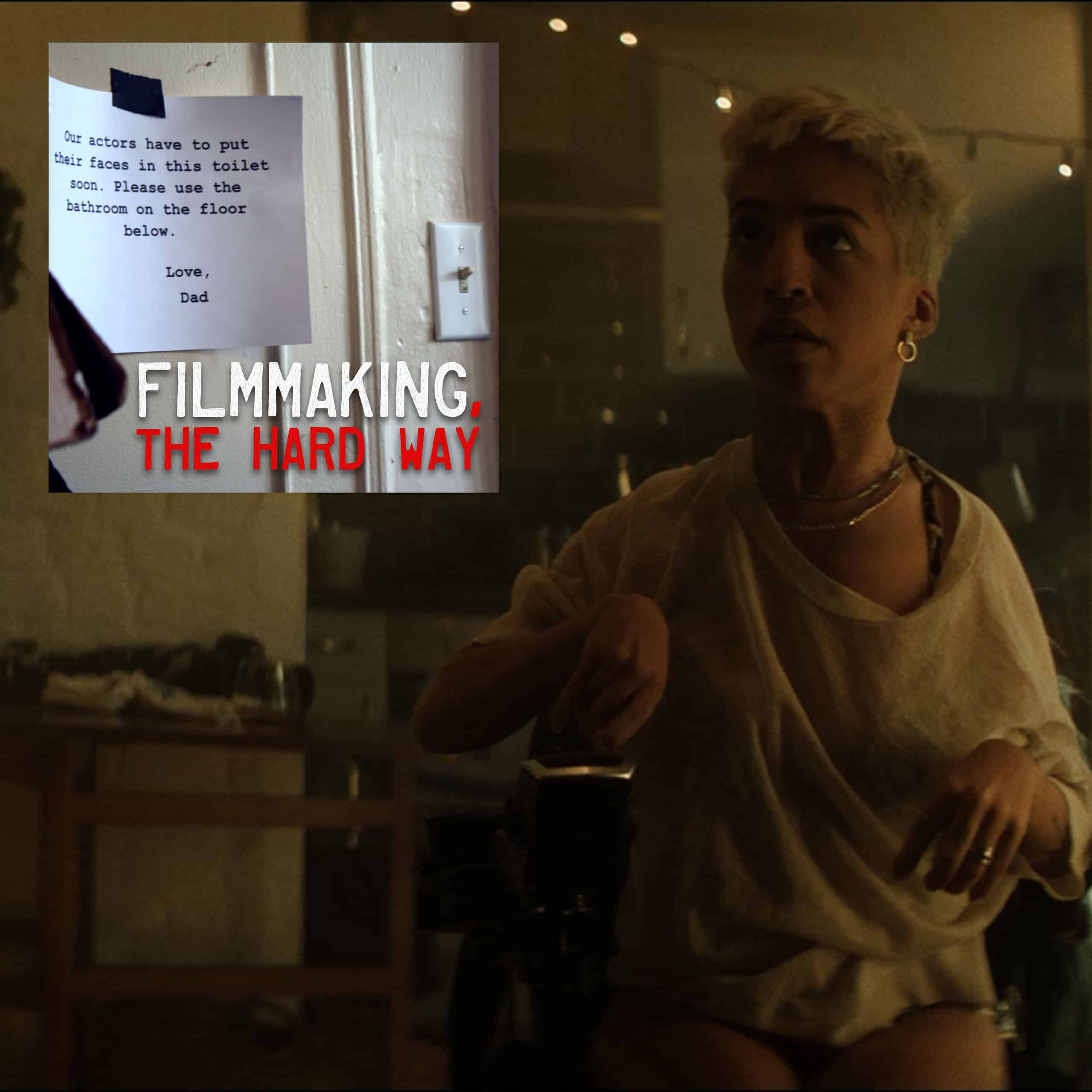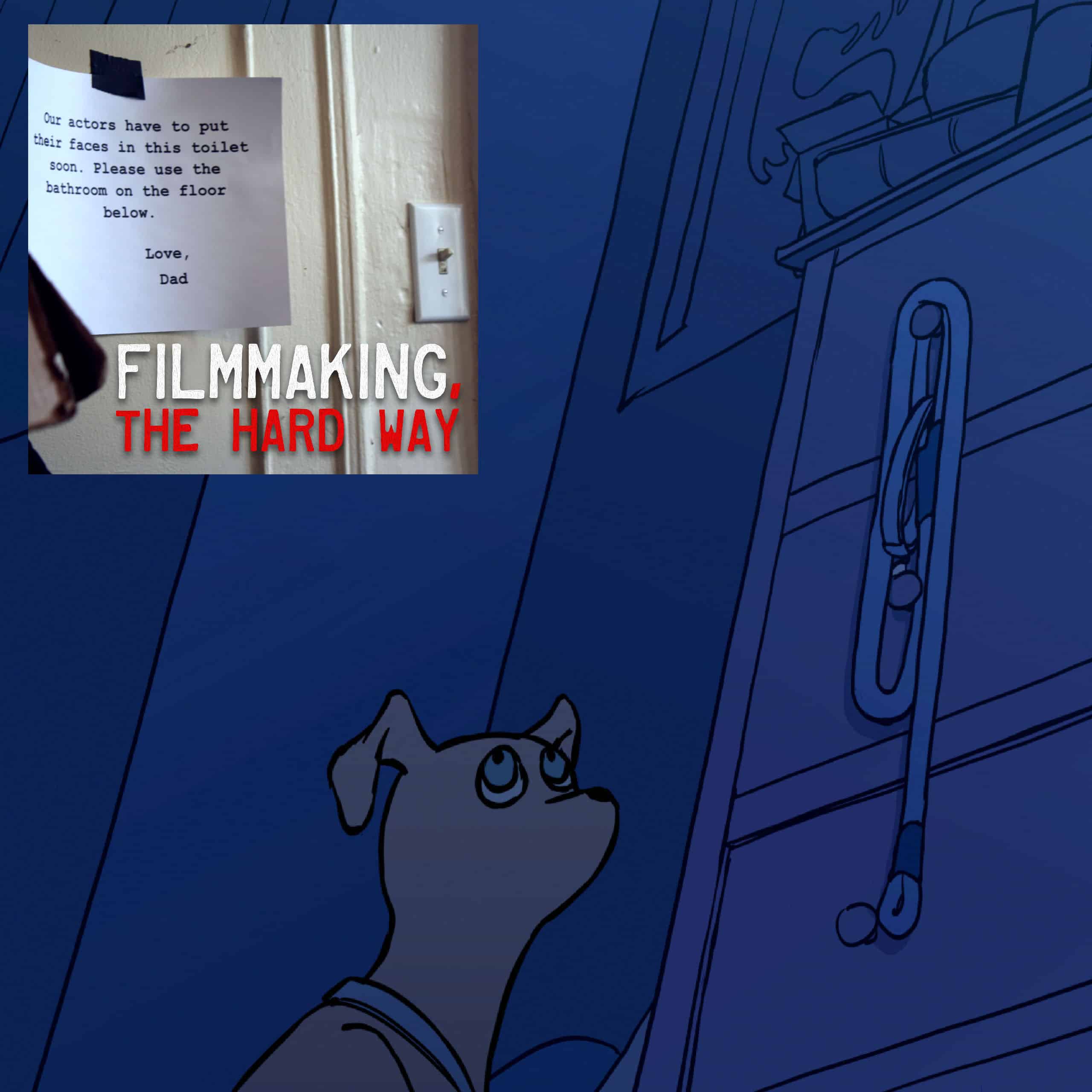
ARTICLE: How I Sold This (Don’t Try This Home)
:: by Josh Folan :: Excerpt from “Filmmaking, the Hard Way”, available on Amazon ::
Effect:
Feature-length romantic thriller (All God’s Creatures – nyehentertainment.com/agc) with no “stars”, created by “unknown” filmmakers, and produced with less than $30,000 to work with is picked up for distribution in late 2011. By May 2012 it can be purchased through the biggest retailer in the known universe (Walmart) and numerous other outlets.
Cause:
- Make a movie. Preferably a good one with a unique and interesting story, compelling characters, and a few commercial sales tools (sex, nudity, gore, comedy, super heroes – that sort of thing). Seems an obvious step, yet it is quite often overlooked. Particularly the “good” part. If you don’t have something unique about your film to passionately pitch to distributors when you finally get a few to listen to you, why the hell would they invest their time and money trying to create an audience for it?
- Formulate a pitch. An airtight one that doesn’t sound like anything you’ve read anywhere else, and DEFINITELY not any of that “Terminator meets Christmas Vacation” shit. If you get an acquisitions executive on the phone and you sputter out one of those for your little movie – that does not have a Schwarzenegger, Chevy Chase, or even an Uncle Eddie – it will be the last time you speak with that particular individual. My pitch with AGC was that “it boiled down to a dark, twisted love story between these two really fucked up people – a serial killer and a prostitute. And while a story like this would typically zero in on those elements, the killing and the sex, ours almost makes those things ancillary because of the focus on the love story.” Yes, you will get very sick of hearing yourself repeat your airtight pitch…over and over and over and over. And over. And…over. That is, if you do the amount of legwork that will be required to actually convince a distribution professional that investing in your little film is worth their time and money.
- Make a pretty PDF. A press kit. These days this means an EPK (Electronic Press Kit), of which your pretty PDF will be a part of. The EPK will contain the numerous clever/mysterious/hilarious teasers and trailers that you have created to market your film with, your jaw-dropping original key art (or one sheet, depending on your preferred lingo), any press interview video clips you had the foresight to arrange while filming the movie, any press clippings/screenshots that pertain to the film, the countless production stills the most important member of your marketing team (the still photographer) procured for you during the shoot, as well as the press kit PDF itself. The cover should be a hi-res jpg of the key art. The innards should begin with a well-written synopsis of the film, then move on to either cast and filmmaker bios or press accomplishments and reviewer quotes, whichever is a stronger asset. Follow up with whichever of those things didn’t go first, then a full credit list and technical attributes rundown (aspect ratio, camera, sound mix, etc). The last mandatory element is a contact page with the press and sales contacts for the film, but before that feel free to include anything else you deem as a selling point for your product. The soundtrack for AGC is phenomenal (we were actually able to secure a soundtrack distribution deal separate from our film agreement, look for that on iTunes on July 3rd) so we made sure to include a page that touched on the bands that contributed to the film. We also had short notes from the co-directors, as well as myself and my co-producer. Having these ready to go will be helpful for a lot of festival submissions where a director statement is required. One of our marketing video ideas was a “Shoot to Kill: The Making of All God’s Creatures” interview series (the videos can be found on the NYEH Entertainment Youtube channel at youtube.com/joshfolan if you’re interested), so we dedicated a page to that. Be sure to pepper in the best of those production stills you have, and try to style the overall layout in a way that caters to the subject matter and feel of the film itself – try to streamline all your marketing tools with the same look and feel. Brand awareness and recognition is marketing 101. If you don’t have an eye for making these things look professional, find someone who does and chain them in your basement until they agree to do it for you.
- You have your sales kit now. What the hell do you do with it, right? The first step in selling anything is identifying who your most likely buyers could be. In this case, they are film distributors and believe it or not, they are starving for good product. Contrary to popular belief, they do not spend their days waiting by their phones and email inboxes for the next opportunity to shit on the hopes and dreams of the poor, unknown filmmaker. They pray every waking moment for a call from a well-spoken, well-rounded human being who can conversationally explain why their film will be able to make both the distributor and the filmmaker a dump truck of money, and who won’t drive the distributor bonkers with artistically-driven melodrama over the next ten years (which is the customary length of a distribution deal). So be that girl or guy. That’s step one in the actual sales process – understand they want and need what you have, you just have to present it like a sane human being with an air of professionalism to get them to listen.
- On to identifying those buyers. I’m going to assume you didn’t get into Sundance, Cannes, Tribeca, or even SXSW. If you did, you’re gifted and lucky and you don’t need to read filmmaking columns written by me. Good for you. For the rest of us, you can likely cross the household (at least in my household) name and studio distributors off your list – Focus Features, the Weinstein Company, etc. They deal in “big” films and if you’re not a big enough fish with an amazing enough product to get into any of those aforementioned festivals, they probably are not buying what you’re selling. The answer for us “small” filmmakers is the American Film Market (AFM), held in Santa Monica every winter. It costs a few hundred bucks for a pass for the second half of the market, which is about the time when the distributors have finished the bulk of the selling of their existing catalogue that they came to do and are willing to talk acquisitions. On top of the selling opportunity being in attendance presents, it also pulls the curtain back and exposes the wizard that is the mysterious distribution industry as seen by the indie filmmaker – it’s a hell of a learning experience and networking opportunity even if you fail at selling your movie. Once you sign up, you will have access to a listing of every single company that will be at the market – the keys to daddy’s convertible, so hurry up and wrap this thing around a telephone pole before he changes his mind. You take that list and you pull up your IMDb Pro subscription and dissect each and every one of them; the types of films they deal in (genre, budget range, “star power”), how many they take on a year, all the personnel that have “acquisitions” in their job title. You dump all that into a spreadsheet and start identifying the companies that are matches based on those genre and budget range variables. Put it a little star next to the ones that match up with your film – these are your targets.
- Pick up the phone and call them. Start with the person with the job title (with “acquisitions” in it) that sounds the most important. Often this means having a “VP” designation in there somewhere. Be put on hold for ten minutes, then transferred to a general voicemail box that isn’t for the specific person you asked for. Leave a friendly message with your pitch and contact info, and that you will be in attendance at AFM and would love to set up a short meeting on Sunday, Monday, or Tuesday (Wednesday is a wash at the market, everyone is clearing out by then) of that week. Hang up and send an email explaining all those same things, and that you’ll try them again in a few days. Wash, rinse, repeat. For every single company that makes sense as a buyer. Keep track on your spreadsheet of when you last spoke to the person, when you said you’d be in touch again for follow up, and when and to whom you’re redirected when you find out you’re hunting down the wrong person. And if you secure a meeting, for God’s sake write it down and keep it.
- Do your homework. So you’ve got a meeting, or a request for a screener, or even just an expression of positive interest from one of your target distributors. Now you need to find out whether or not this company you’re so excited about has a track record of keeping their promises and making good on their financial obligations to filmmakers, and the only way to do that is to ask the filmmakers they’re currently working with whether or not that is the case. Back to IMDb Pro, where you’ll look up the producers, or often the director/producer hybrid in the case of smaller films, of the titles the company has listed as having distributed. Shoot these filmmakers a cordial email asking about their experience to date with the company, and most are happy to give their insight…some will even talk your ear off about it. Do that with a range of titles in the distributor’s catalogue – some from very recently, some from a few years back that have experienced the full distribution cycle with the company. Not every filmmaker is going to be ecstatic about their experience, so take any one opinion with a grain of salt, but if you’re hearing bad things from three, four, five people it’s quite likely you’d end up having less-than-stellar feedback when asked down the line if you worked with the company. Expect to be doing this same thing with any prospect that comes up at any point in this process.
- Work the AFM. You’ve mailed out a ton of screeners and those pretty PDFs to eager distribution reps with all the companies you targeted, you’ve got a few meetings set up, your Starbucks gold card is all charged up (that last preparation tactic is moot, the closest chain coffee store to the Loews Hotel is a Coffee Bean) and you’re ready to sell your ass off. Now what the hell is the AFM, exactly? It’s basically a hotel lobby on entertainment business steroids. You walk in and Variety jams three copies of their daily AFM-edition rag in your face, so you can read all about the millions of dollars that some film with one of those goddamn twilight kids attached to it was just financed with yesterday, then some guy dressed in an oversized foam space suit tries to tell you all about Troma Entertainment’s latest Sci-Fi title, and you can’t find that bathroom. Oh wait, there it is…to the left of the doors when you first walk in the hotel. The line is backed up all the way past the information desk though. While you’re waiting in line for that, get out the most updated map of the company booth locations you can get your hands on and start plotting your trajectory through the hotel. Start with the companies that directly invited you to come speak with them at the market, and work your way down through the companies that said you don’t have a snowball’s chance in hell of getting a moment of their attention because they’ll be too busy selling the amazing product in their existing catalogue. The “booths” are not booths at all, they’re actual hotel rooms than have been converted into office suites just for these purposes. The doors are open, or will be at some point, so just walk in and ask to speak to the acquisitions representative you already know for a fact is in attendance (because you already did your homework), and if they’re not in ask if you can schedule an appointment with them or when they’ll be available to speak. If they’re not available at all, ask if you can leave a screener and hard copy of your press kit, which you should have plenty of.
Most important of all this is the follow up. You are not Harvey Weinstein, so it’s very unlikely you’re going to initiate a bidding war at the market and sign a deal that will be announced in one of those AFM Variety issues. So keep good notes after every meeting. Know when you’re supposed to follow up after the market and do so. Send your pretty PDFs and screeners to the people that request them. Call them just frequently enough to not completely annoy them, but understand that they understand – they’re in sales too. Sales is about persistence, so be persistent. In the words of Derek Connolly, channeled through Mark Duplass in “Safety Not Guaranteed” (sidebar: see this movie), “There’s no sense in nonsense when the heat is hot.”




